I'm looking for a C++ container to store pointers to objects which also meets the following requirements.
- A container that keeps the order of elements (sequence container, so
std::setis not suitable) - A container that has a member function which return the actual size (As
std::array::size()always returns the fixed size,std::arrayis not suitable) - A container that supports random accesses such as
operator [].
This is my code snippet and I'd like to remove the assertions used for checking size and uniqueness of elements.
#include <vector>
#include <set>
#include "assert.h"
class Foo {
public:
void DoSomething() {
}
};
int main() {
// a variable used to check whether a container is properly assigned
const uint8_t size_ = 2;
Foo foo1;
Foo foo2;
// Needs a kind of sequential containers to keep the order
// used std::vector instead of std::array to use member function size()
const std::vector<Foo*> vec = {
&foo1,
&foo2
};
std::set<Foo*> set_(vec.begin(), vec.end());
assert(vec.size() == size_); // size checking against pre-defined value
assert(vec.size() == set_.size()); // check for elements uniqueness
// Needs to access elements using [] operator
for (auto i = 0; i < size_; i++) {
vec[i]->DoSomething();
}
return 0;
}
Is there a C++ container which doesn't need two assertions used in my code snippet? Or should I need to make my own class which encapsulates one of STL containers?
